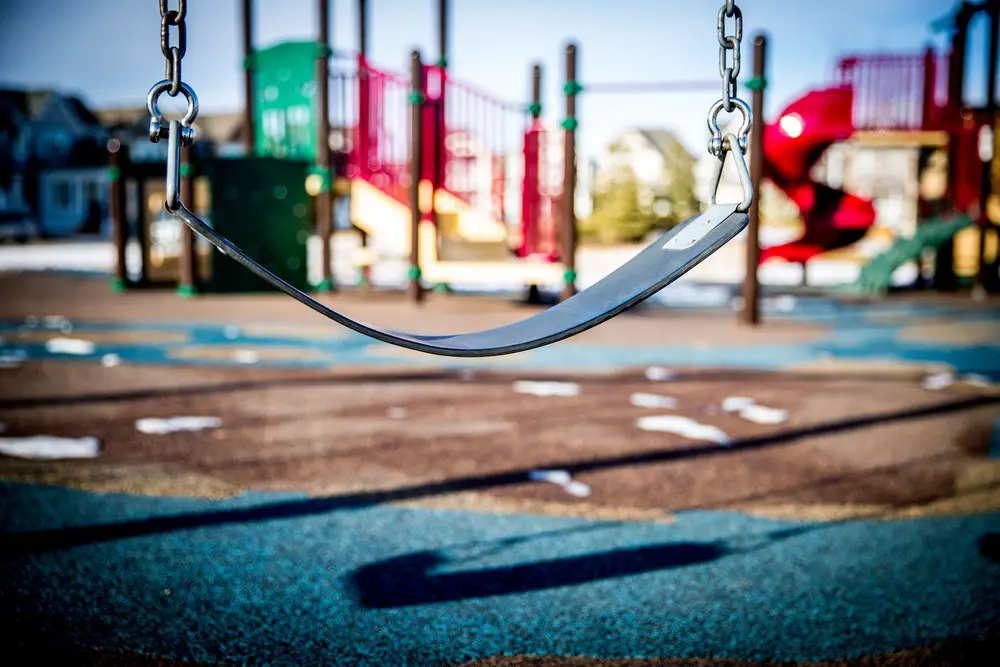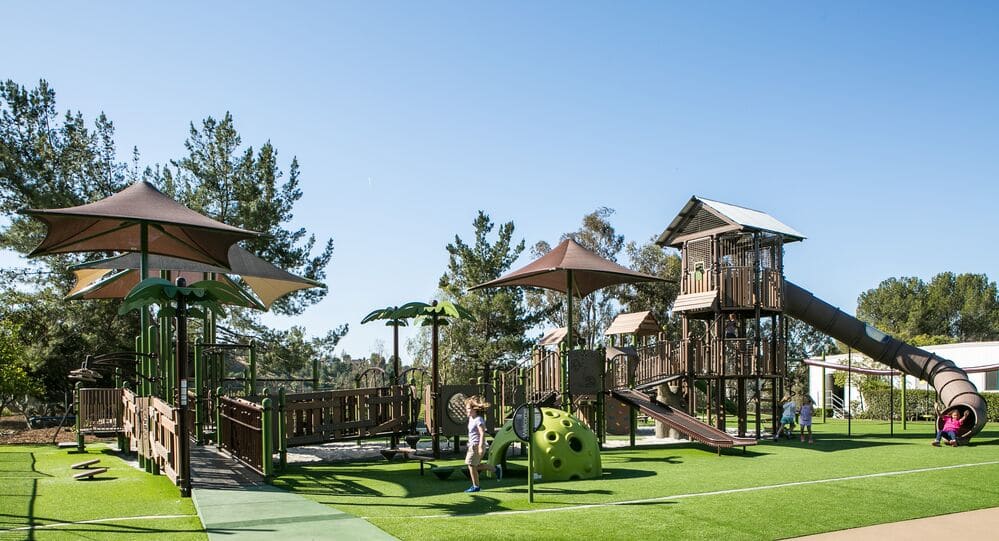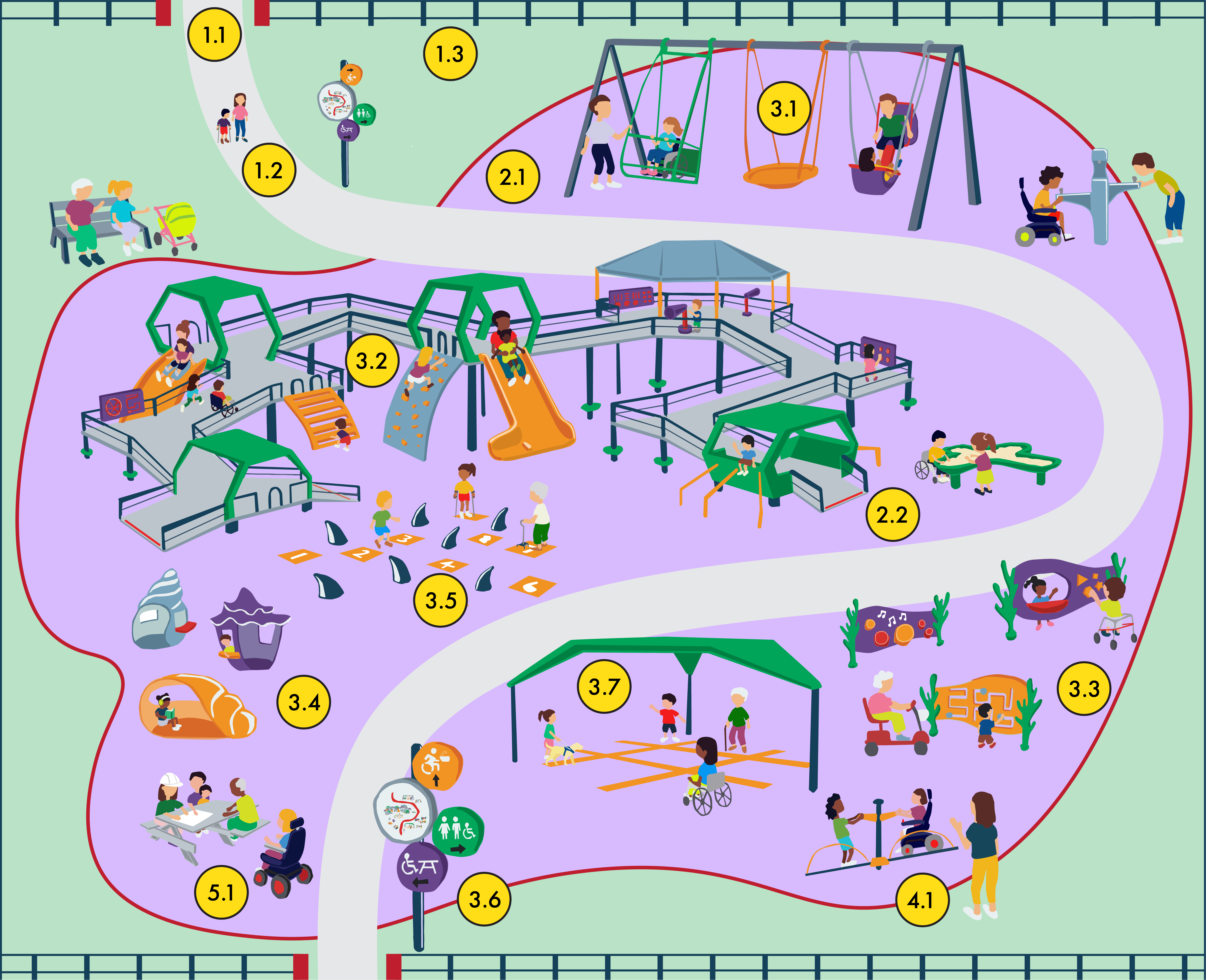How Does Architecture Respond To The Principles Of Inclusive Playground Design?

Playgrounds are important for children’s development. They provide a space where children can learn, grow, and have fun. However, playgrounds are more than just a place to play – they are also a place where children can develop social skills, physical abilities, and creativity.
If you’re interested in designing a playground, it’s important to understand the key architectural principles that contribute to a successful playground design. Here are some of the key principles to keep in mind:
Landscape Integration
One of the most important principles of playground design is landscape integration. This principle involves designing the playground to complement, rather than detract from, the natural surroundings. Coastal playgrounds, for example, might incorporate sand and shells, while playgrounds in a forest might feature wooden structures and natural elements.
Landscape integration also involves incorporating the surrounding environment into the playground equipment itself. For example, a large oak tree can be transformed into a natural climbing structure, and natural elements like boulders and rocks can be added to provide additional opportunities for exploration and play.
Age-Appropriate Design
Another key principle of playground design is age-appropriate design. Children of different ages have different levels of physical ability and social interaction. A successful playground design takes these differences into account and provides a range of equipment and play opportunities that cater to different ages and abilities.
For example, a playground for younger children might have lower, more manageable structures, while a playground for older children might have higher, more challenging structures. It’s also important to provide a mix of equipment, including swings, slides, climbing structures, and balance beams, to provide a range of play opportunities that cater to different ages and abilities.
Accessibility
Accessibility is another important principle of playground design. It’s important to create a space that is accessible to as many children as possible, regardless of their physical abilities. This includes providing equipment that is wheelchair accessible, as well as providing a variety of sensory experiences for children with disabilities.
To create an accessible playground, you may need to consider the surrounding terrain and elements like stairs and ramps. Additionally, you’ll need to ensure that the playground is well-lit and that there are clear pathways through the equipment.
Safety
Safety is always a top priority when it comes to playground design. It’s important to ensure that the equipment is safe and that the playground is well-maintained and free of hazards. This includes checking equipment regularly for signs of wear and tear, avoiding sharp edges, and ensuring that the surfaces surrounding the equipment are soft enough to cushion falls.
Additionally, you’ll want to ensure that the playground is situated in a safe location. For example, you’ll want to avoid placing it near busy roads or bodies of water.
Creativity and Imagination
Finally, successful playgrounds encourage creativity and imagination. This includes incorporating elements like sandboxes, water features, and musical instruments to provide a range of sensory experiences. It also involves incorporating unique and interesting design elements, like sculptures, murals, and interactive play structures.
A successful playground design considers the unique needs and interests of the community it serves. By incorporating elements of creativity and imagination, you can create a space that encourages children to explore and use their imagination.
Designing a successful playground requires consideration of a wide range of factors, including those outlined above. By incorporating these key principles into your design, you can create a space that encourages children to develop socially, physically, and creatively.
FAQ
What are the key principles of playground design?
The key principles of playground design include landscape integration, age-appropriate design, accessibility, safety, and creativity and imagination. These principles involve creating a space that complements the natural environment, caters to the needs of children of different ages and abilities, is accessible to all, is safe and well-maintained, and encourages creativity and imagination.
Why is it important to consider landscape integration in playground design?
Landscape integration is important in playground design because it helps create a space that complements, rather than detracts from, the surrounding environment. By incorporating natural elements and structures that mimic the natural environment, you can create a space that feels like a seamless extension of the surrounding landscape.
What are some examples of age-appropriate design in playgrounds?
Examples of age-appropriate design might include lower structures and simpler equipment for younger children, and higher, more challenging equipment for older children. A successful playground design also incorporates a mix of equipment, including swings, slides, climbing structures, and balance beams, to cater to a range of ages and abilities.
How can I ensure that my playground is safe?
To ensure that your playground is safe, you’ll need to check the equipment regularly for signs of wear and tear, avoid sharp edges, and ensure that the surfaces surrounding the equipment are soft enough to cushion falls. Additionally, you should ensure that the playground is situated in a safe location, and that it is well-maintained and free of hazards.
Why is creativity and imagination important in playground design?
Creativity and imagination are important in playground design because they encourage children to explore and use their imaginations. By incorporating unique and interesting design elements, like sculptures, murals, and interactive play structures, you can create a space that is engaging and encourages creative play.
How can I create an accessible playground?
To create an accessible playground, you may need to consider the surrounding terrain and elements like stairs and ramps. Additionally, you’ll need to ensure that the playground is well-lit and that there are clear pathways through the equipment. It’s also important to provide equipment that is wheelchair accessible, as well as a variety of sensory experiences for children with disabilities.
What is the most important principle of playground design?
While all of the principles outlined above are important, safety is perhaps the most important principle of playground design. A successful playground design prioritizes the safety of the children using the equipment and ensures that the playground is well-maintained and free of hazards.



Post a Comment for "How Does Architecture Respond To The Principles Of Inclusive Playground Design?"